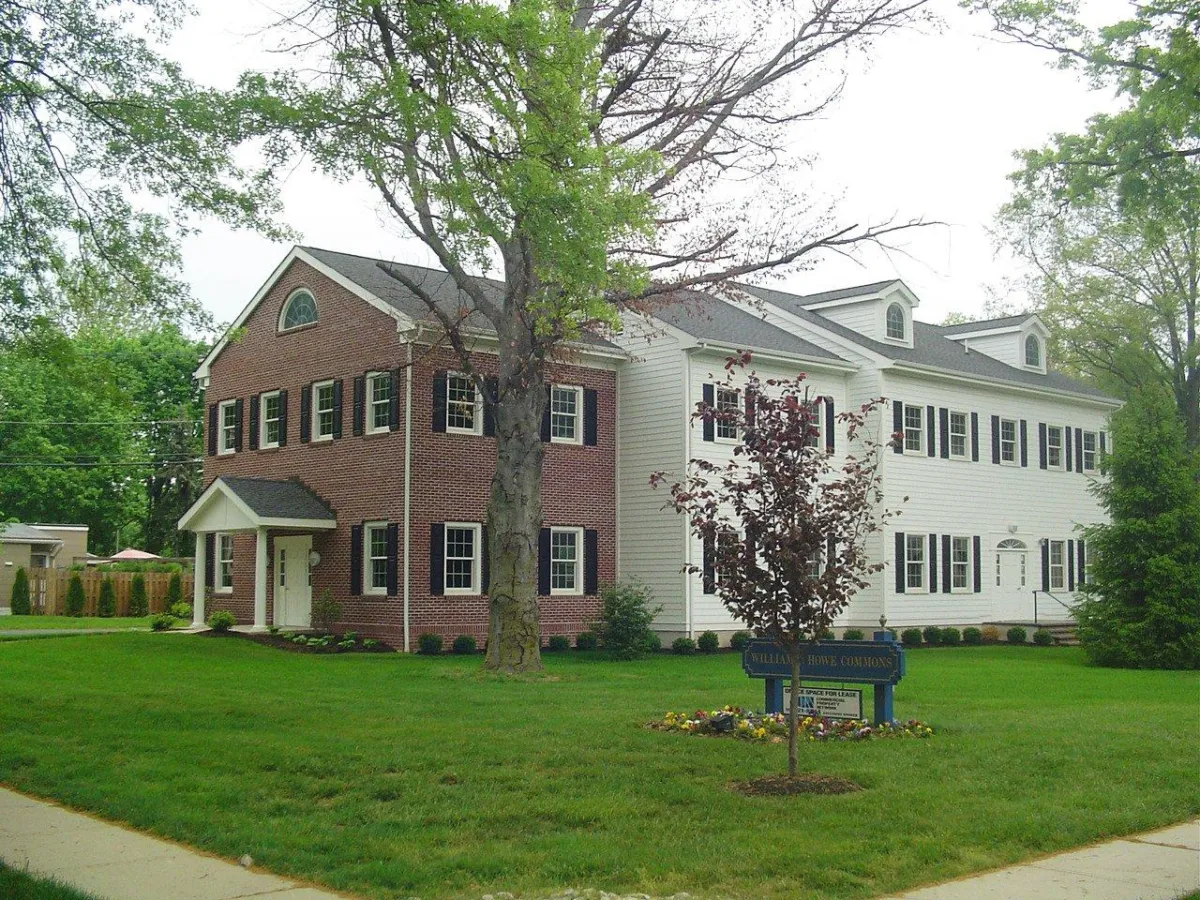Pretium Updates: Staying Ahead in Property Management
Welcome to our news hub, where you can stay informed about the latest developments, insights, and success stories from Pretium. Whether it’s updates on commercial property trends, highlights from our projects, or tips for optimizing your investments, you’ll find it all here.
Get exclusive access to The Pretium Edge, your go-to resource for maximizing property investments and growing strategic partnerships. Each month, you’ll receive expert market insights, property management tips, success stories, and updates on opportunities to collaborate with Pretium. Stay informed, stay connected, and take your business to the next level—without worrying about your privacy. We value your trust and will never sell your data. Sign up today and start building your edge!
Latest Updates: What’s New at Pretium
COMING SOON
No blogs found
Feature Property of The Month

Howe Commons
Location: Pennington, New Jersey
Square Footage: 32,603
Structure: Office Buildings
Acquired: 1998
Located in the heart of Pennington, New Jersey, Howe Commons is a premier office space with a distinguished history and a thriving tenant base. Spanning over 32,600 square feet, this well-maintained property offers modern amenities and a prime location that caters to a variety of professional needs.
Key Tenants:
Arete: An innovative leader in their field, committed to delivering elegant effective supply chain optimization solutions.
Electrochemical Society: A globally recognized organization dedicated to advancing electrochemical science and technology.
Howe Commons embodies the balance of heritage and forward-thinking, making it a standout asset in our portfolio. Whether you're exploring leasing opportunities or inspired by our history of long-term property value, Howe Commons is a symbol of enduring excellence in office space management.
MARKET INSIGHTS: COMMERCIAL REAL ESTATE TRENDS
Market Insights: Commercial Real Estate Trends for 2025
The commercial real estate (CRE) market in 2025 is poised for a pivotal year as economic shifts, evolving consumer and business demands, and technological advancements reshape the industry. While challenges persist, savvy investors and industry stakeholders have significant opportunities to capitalize on emerging trends and market inefficiencies.
Below, we provide a comprehensive outlook for 2025, exploring key drivers, sector-specific insights, and investment strategies.
Economic Landscape
Interest Rates
Current Outlook: Interest rates, while still elevated compared to historical norms, are expected to stabilize or decline further in 2025 as central banks prioritize economic growth. Impact on CRE: Lower borrowing costs will fuel renewed investor confidence, particularly in value-add and distressed property sectors. Markets with the strongest demographic and job growth are expected to see increased competition among buyers.Long-term fixed-rate financing will remain a key strategy for investors mitigating potential future rate volatility.
Economic Growth
Soft Landing Continues: The global economy is projected to achieve modest growth in 2025, with a "soft landing" scenario materializing in many major markets.Localized Opportunities: Secondary and tertiary markets are emerging as hot spots due to affordability and infrastructure investments.
Financing Constraints Easing
While lending conditions remain cautious, capital markets are expected to loosen slightly, offering more options for refinancing and acquisitions. Creative financing solutions, such as private equity partnerships and mezzanine debt, are becoming mainstream.
Sector-Specific Trends
Office Spaces
Hybrid Work's Legacy: The demand for traditional office spaces continues to lag, with hybrid and remote work remaining dominant.Secondary markets are particularly impacted, with significant price corrections.Adaptive Reuse: Conversions of office spaces into residential, mixed-use, or life sciences properties are gaining traction, especially in urban cores.Bright Spot: Premium office assets in urban hubs with limited new supply and proximity to transit continue to hold their value.
Industrial and Logistics
E-commerce Evolution: The e-commerce sector remains a primary driver of industrial real estate demand, with same-day delivery requirements pushing for distribution hubs near population centers. Supply Chain Resilience: Investors are targeting markets with strategic proximity to ports, rail hubs, and highways to capture ongoing demand for supply chain optimization.Automation-Driven Design: Properties with modern features like robotics-friendly layouts and renewable energy systems are attracting premium valuations.
Retail
Resilience Through Innovation: The retail sector is being buoyed by convenience-focused and experiential formats, such as grocery-anchored retail and entertainment-driven centers.Vacant spaces in suburban markets are being repurposed into medical offices, fulfillment centers, or community hubs. Omnichannel Growth: Retailers are integrating physical stores with digital strategies, driving demand for properties that accommodate hybrid retail experiences.
Multifamily Housing
Increased Supply and Moderating Rents: A wave of apartment construction in 2024 is expected to stabilize rent growth in 2025, improving affordability in key markets.Demand Drivers: Urban migration among young professionals, combined with sustained demand for suburban rental properties, continues to drive multifamily investment.
Alternative Assets
Data Centers: As cloud computing and AI adoption grow, data centers remain a high-demand asset class. Proximity to fiber-optic networks and renewable energy sources are critical factors for investors. Healthcare Properties: Demographic trends, such as an aging population, are driving demand for medical office buildings and senior housing. Life Sciences: Biotech growth is bolstering demand for lab and research facilities, particularly in innovation hubs like Boston, San Diego, and Raleigh.
Hotels
Domestic Tourism Strengthens: Travel demand remains robust, supported by increased domestic tourism and the rise of "workcation" trends. Select Service Properties: Limited-service hotels continue to outperform full-service properties due to lower operating costs and consistent traveler demand.
Investment Strategies for 2025
Shifting Capital Allocation
Investors are continuing to pivot from traditional office assets toward industrial, multifamily, and alternative sectors like healthcare and data centers.
Assets and Value-Add Opportunities
Target Markets: Investors are focusing on oversupplied or economically distressed markets for discounted acquisitions.Long-Term Focus: These opportunities are especially appealing for investors with a multi-year horizon, as cyclical recoveries are expected.
ESG and Sustainability
Green Investments: Properties with energy-efficient designs and ESG (Environmental, Social, and Governance) certifications are becoming critical in portfolios, as tenants and investors increasingly prioritize sustainability.Regulatory Push: Governments are incentivizing retrofitting older properties to meet green standards, offering potential cost savings.
Challenges for 2025
Cost Inflation
The rising cost of materials and labor continues to challenge developers, although stabilization is expected in the second half of the year.
Regulatory Uncertainty
Changes in tax laws, zoning policies, or environmental regulations could introduce unexpected hurdles for CRE stakeholders.
Technological Disruption
Technology-driven innovations are transforming tenant expectations, requiring property owners to adapt to remain competitive (e.g., smart buildings, 5G integration, and tenant experience apps).
Opportunities in 2025
Emerging Markets
Regions with high population growth, robust infrastructure investments, and pro-business policies are expected to outperform in 2025.
Tech-Forward Developments
Properties that incorporate PropTech solutions—such as smart sensors, tenant management apps, and automated building systems—are increasingly favored by tenants and investors alike.
Cross-Border Investments
Favorable currency dynamics and easing travel restrictions are driving increased interest from foreign investors, particularly in gateway U.S. cities like Miami, New York, and Los Angeles.
Conclusion
The commercial real estate market in 2025 is brimming with opportunities for investors and developers prepared to navigate an evolving landscape. While challenges like financing constraints and rising costs persist, shifting economic conditions and structural changes across sectors provide avenues for growth.
Investors with a keen eye for demographic trends, sustainability, and emerging markets are best positioned to unlock long-term value. For further insights, refer to detailed market outlooks from trusted sources like CBRE, Deloitte, and CrowdStreet.
Would you like me to add visual data elements like key statistics, charts, or references to enhance this report?

COMMUNITY SPOTLIGHT
2025 marks a pivotal year for Pretium as we expand our network of trusted partners and elevate the communities we serve. Whether you’re a real estate broker seeking robust collaboration or a vendor aiming to connect with a dynamic property management leader, Pretium offers a platform built on trust, innovation, and mutual success.
Here’s what sets Pretium apart in partnerships:
Collaboration: We Prioritize relationships, that Foster growth for all parties. Through shared goals, and transparent communication, we create partnerships that are both meaningful and impactful.
Networking Opportunities: Being part of the premium community means access to an expansive, network of industry leaders, driving business opportunities, and innovation.
Best-in-class commission structure: Our commitment to fair and rewarding compensation ensures that our partners are valued and motivated to achieve excellence.
Community impact: Beyond business, we are dedicated to elevating the neighborhoods we manage, creating spaces where people thrive.

